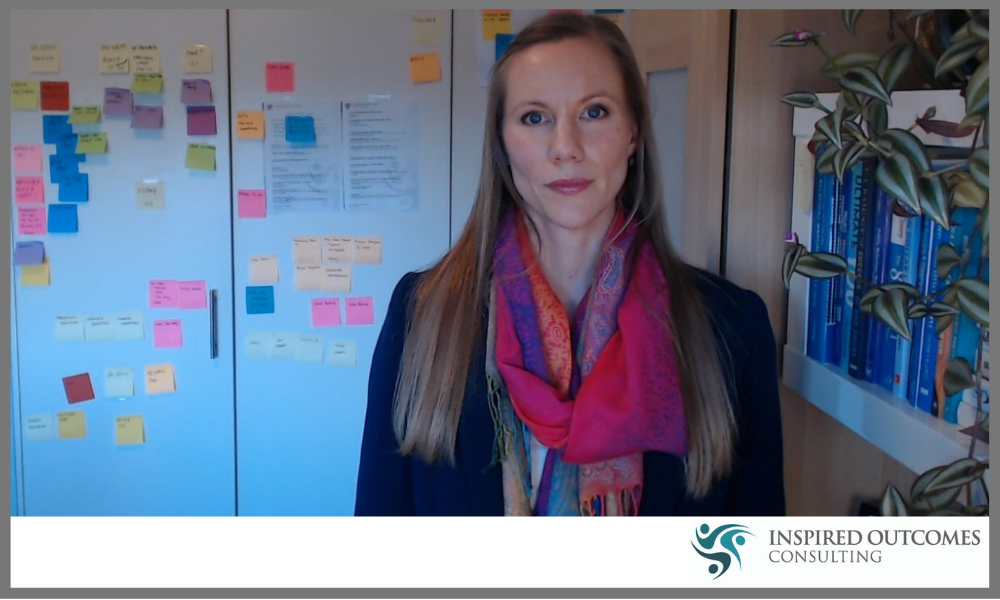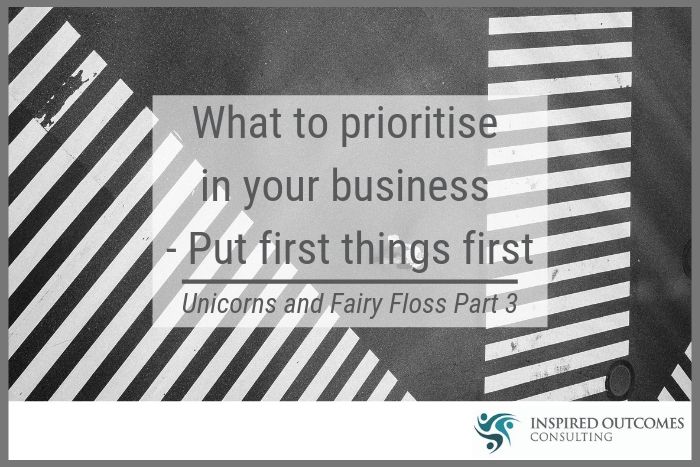As you probably know, being a business owner isn’t always pretty or fun, especially as you juggle the tension between working “on” the business and “in” the business.
The thing is, your business can’t progress until you take a moment to think about how your business will progress.
Successful businesses have a plan. One that is clear, relevant and most importantly, actionable. It could be a plan on page or a 30 page document wrapped in a flashy binder – as long as you’ve spent some time thinking about (and documenting) how you want to get from A to B, you have a plan.
— Read more: Habits of Highly Productive Small Business Owners —
But before you figure out how to get from A to B you need to know what the heck B looks like. And that’s where your vision statement comes in.
What is a vision statement?
You’ve probably heard that you should have a vision for your business.
You’ve probably also heard or been told that you need to have a vision statement.
But what if you aren’t completely clear on what it is, or you haven’t defined a statement that sums that vision up clearly?
Well, you’re in the right place, because today we are talking about how to articulate the vision for your business.
— Read more: Why Values-Based Businesses Are More Successful —
The vision of my business is to help change the world, one workplace at a time.
I’ll be honest, it sounds ambitious. But there’s a reason for that. My vision statement reminds me and my team every day why we are doing what we are doing.
And the ambitious nature of the statement also tends to keep me on my toes, ensuring I’m taking action in the direction of that vision on a daily basis.
But what is a vision statement?
A vision statement is defined as a clear and comprehensive single point in time that defines success in your organisation. It’s kind of like an ultimate goal or objective.
Should I have a vision statement?
The answer is…YES.
But it might not be the shiny vision statement of your dreams just yet and if you don’t have one, your business can still be highly successful..
Having clarity in your business vision benefits you and your team. Together, you can understand the overall direction the business is heading in. It also helps set a framework, so you know what’s important. With a framework in place, you can make quicker, better decisions that benefit your business.
A great example of this would be introducing a new product vertical, which might be designed to work towards achieving your ultimate goal quicker.
— Read more: How to Use Strengths And Weaknesses to be a Better Leader —
But, what if you don’t have a vision statement? Or, maybe you do have a vision statement, but you’re not meaningfully connected to it.
It’s not the end of the world.
There are plenty of successful businesses out there who haven’t “perfected” their vision statement into something shiny and actionable. Some businesses might have one, but they can’t recall it and therefore don’t actively use it.
In fact, just between the two of us, I actually coached an 8 figure business that didn’t have one at all!
However, just because you have been successful (enough), doesn’t mean you shouldn’t still invest time and energy into a vision statement. They can only help to elevate your team and grow your business.
How do I articulate my vision?
Articulating your vision means you need to start dreaming big.
Start by building a picture of what your organisation looks like in the next 3-5 years. Once you have that image in your mind, you can start to build a pathway towards articulating your longer-term vision.
— Read more: How Being a Sh*t Leader Costs Your Business Money —
Take a moment to think about these questions:
- What is your organisation known for?
- How do you want your team to feel in the business?
- How are you different from your competitors?
- What do your customers say about you?
- And sometimes, most importantly, what is the legacy you’re leaving?
Once you’ve discovered your answers, I would recommend reviewing and refining them annually. If you want to ensure you’re always heading in the right direction, you can do this more regularly as well.
A caveat
When you’re looking at your shorter and longer-term visions, challenge yourself to authentically work towards what YOU want, not what you THINK you SHOULD have in your business.
Success to you might actually be a small, locally-owned, uncomplicated business that turns over a good profit. It might not include massive numbers of employees or millions of dollars. And that’s completely OK.
As a small business owner, when you work towards what makes you happy, the rest follows, so challenge your preconceptions of what success is for you.
Discovering and communicating your business vision takes time and frequent reassessment.
Building an image for the future of your business gives you something to work towards and a clear goal to strive for.
If you need guidance shaping your vision and turning it into action, you can always get in touch.









